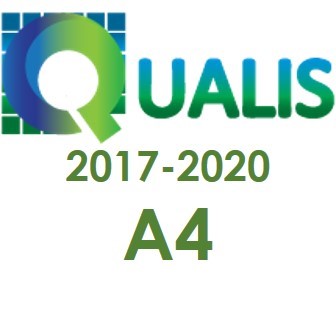the participation of immigrant students’ families in educational institutions
Keywords:
schools, families of immigrant origin, participation, intercultural education, equity, qualitative researchAbstract
The phenomena of immigration and interculturalism have taken on tremendous importance in Spain, not only because of their dimensions, but also because of the variety of countries from which the immigrants come, and the complexity of current migratory situations. The essence of the group’s work was to study the schools’ response to this situation that has almost been thrown upon
them, and to look into the families’ participation in those schools. This article describes the process of an ethnographical research study that was carried out during two school years in six institutions in Malaga (Spain) on the participation of immigrant students’ families in schools. The research project was carried out with the selected centres (4 Primary and 2 Secondary schools) involving interviews, observations, discussion groups, and the documents related to the work topic in question were analysed. The main results were developed, both those related to the process and to the focal point of study, emphasising the good practices that are being implemented at the centres, and which may serve as a reference in other school contexts. The research reports have been returned to the centres to be discussed with the participants. The general conclusions are raised here, which have been taken from the six centres in which the study was carried out. Consequently, there are some questions that refer to all the centres, and others that are particular to one or some of them.
Downloads
References
CABALLERO, Z. (2001). Aulas de colores y sueños. La cotidianeidad en las escuelas multiculturales. Barcelona: Octaedro.
CARRASCO S. Y otros (2008): Familias inmigrantes y escuela: desencuentros, estrategias y capital social. En Revista Complutense de Educación. Vol 20. Nº 1. Págs. 55-78.
COLECTIVO AMANI (1996). Educación Intercultural. Análisis y resolución de conflictos. Madrid: Editorial Popular.
CYRULNIK, B. (2009). Autobiografía de un espantapájaros. Testimonio de resiliencia: el retorno a la vida. Barcelona: Gedisa.
DE LA ROSA MORENO, L. (2008). La Historia de Vida de Ángel. Parálisis cerebral, normalidad y comunicación. Madrid: La Muralla.
DEL RÍO FERNÁNDEZ, J.L. (2015): Evaluación de las posibilidades educativas del aula ATAL en los centros escolares de Málaga. Estudio de casos. Tesis doctoral. Universidad de Málaga.
ESSOMBA, M. A. (Coord.). (2004). “Sanduk”, Guía para formar a los educadores y las educadoras en la interculturalidad y la inmigración. Barcelona: Generalitat de Catalunya.
ESSOMBA, M.A. (2007). Participación e inmigración en los centros escolares. Los equipos directivos ante el reto de la inclusión social y educativa del alumnado de familia inmigrada. Rev. Cuatrimestral del Consejo Escolar de Estado (CEE), 5 (Monográfico sobre
participacióneducativa), 1-17.
ESSOMBA, M.A. (2008): 10 ideas clave. La gestión de la diversidad cultural. Ed. Graó. Barcelona.
FERNÁNDEZ ENGUITA, M. Y TERRÉN, E. (2008). Presentación. De inmigrantes a minorías: temas y problemas de la multiculturalidad. Revista de Educación, 345, pp. 15-21.
FRANZÉ MUDANÓ, A. (2008). Diversidad cultural en la escuela. Algunas contribuciones antropológicas. Revista de Educación, 345, pp. 111-132.
GARCÍA CASTAÑO, F. J., RUBIO, M. Y BOUACHRA, O. (2008). Población inmigrante y escuela en España: un balance de investigación. Revista de Educación, 345, pp. 23-60.
GONZÁLEZ FALCÓN, I. (2007). La participación de las familias inmigrantes en la escuela: necesidades de orientación y formación. XXI-Revista de Educación (Huelva), 9, pp. 155-165.
ORDEN DEL 15 DE ENERO DE 2007, por la que se regulan las medidas y actuaciones a desarrollar para la atención del alumnado inmigrante y, especialmente, las Aulas Temporales de Adaptación Lingüística. Boletín Oficial del Estado.
PÉREZ DE PABLOS, S. (2005). El papel de los padres. Madrid: Aguilar.
ROVIRA, A. (2009). La buena crisis. Madrid: Aguilar.
RUIZ ROMÁN, C. (2005). Identidades transculturales: los procesos de construcción de identidad de los hijos de inmigrantes marroquíes en España (Tesis de Doctorado para la obtención del título de Doctor en Ciencias de la Educación, Facultad de Ciencias de la Educación),
Universidad de Málaga, España. Málaga: SPICUM.
SANTOS GUERRA, M. A. (2001). La escuela que aprende. Madrid: Morata.
(2006): Arte y parte. Desarrollar la participación en la escuela. Rev. Andalucía Educativa, 58, pp.
SANTOS GUERRA, M. A. (2014): El Arca de Noé. La escuela salva del diluvio. Ed. ITESOUniversidad de Guadalajara. México.
SANTOS GUERRA, M. A. Y DE LA ROSA MORENO, L. (2013): La escuela sin muros. Las familias del alumnado inmigrante y su participación en la escuela. Ed. Aljibe. Archidona.
SANTOS REGO, M. A Y LORENZO MOLEDO, Mª M. (2009). La participación de las familias inmigrantes en la escuela. Un estudio centrado en la procedencia. Revista de Educación, 350, pp. 277-300.
TRIGUERO VILREALES, P. (2006). La participación de los padres y madres en los centros escolares. Rev. Andalucía Educativa, 58, pp. 31-33.
FUENTES ELECTRÓNICAS
MARTÍNEZ, L. E. (2005). Resiliencia: la capacidad para superarse en la adversidad. Rev. El Cisne, 184 (Año XVI), 1-3. Recuperado de: http://www.elcisne.org/html/index.htm
PÉREZ SERRANO, J. (Coord.). (2008). El inmigrante marroquí en la sociedad andaluza: reconstruyendo el imaginario colectivo. Recuperado de: http://www.uca.es/gruposinv/migraciones/inmigrante_marroqui/index_html
Downloads
Published
How to Cite
Issue
Section
License
Copyright (c) 2024 Revista Internacional de Formação de Professores

This work is licensed under a Creative Commons Attribution-NonCommercial-ShareAlike 4.0 International License.



 Este trabalho está licenciado sob uma licença
Este trabalho está licenciado sob uma licença 